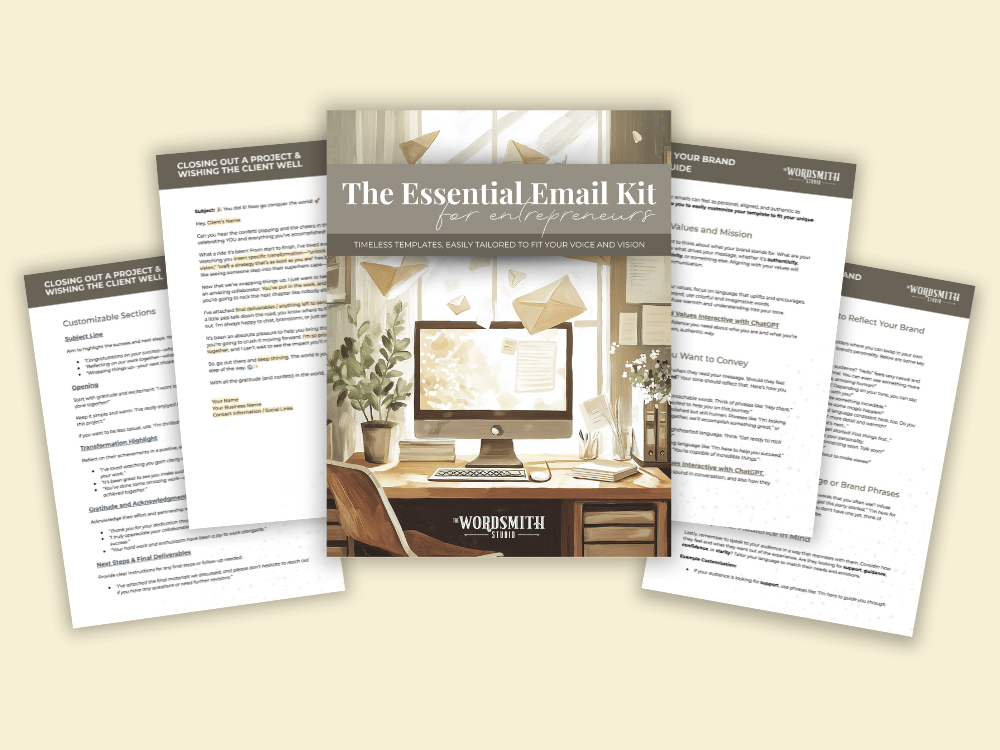Being a solopreneur is kind of like running a circus where you’re the ringmaster, the acrobat, the elephant trainer, and the person selling popcorn. It’s a lot. And if you’re not careful, your clients will start thinking they can swing by the trapeze at all hours with ‘just a quick question’ that somehow eats your entire weekend.
That’s why boundaries with clients aren’t just nice to have—they’re essential for keeping your business (and your sanity) intact.
Why Boundaries Are Your New Best Friend
When you set clear boundaries, you:
- Keep your personal time from becoming an all-you-can-eat buffet for client requests.
- Set expectations so clients aren’t surprised when you don’t respond to a 10 PM ‘urgent’ email.
- Avoid scope creep (a.k.a. sneaky unpaid work that somehow multiplies like rabbits).
- Feel way more in control of your business instead of constantly playing defense.
And the best part? Boundaries don’t make you the bad guy. They actually make clients respect you more—because when you respect your own time, they do too.
How to Set Boundaries Without Feeling Like a Jerk
1. Office Hours: They’re a Thing!
Just because you could respond to emails at midnight doesn’t mean you should. Let clients know when they can expect to hear from you—like this:
“My work hours are Monday–Friday, 9 AM–4 PM EST. Emails received outside these hours will be answered the next business day (unless I’m trapped under something heavy).”
Put it in your email signature, contracts, and onboarding materials. The key is consistency—if you respond at all hours, people will assume you always respond at all hours.
Want a shortcut? Add a professional yet friendly auto-responder to your email system so clients get an instant reminder of your availability.
2. Texting? No, Thanks.
You know what’s fun? Getting a text from a friend. You know what’s not fun? Getting a client text at 7 AM asking if you have ‘just a sec’ to rewrite their entire website.
If you don’t want to be on-call, don’t give out your personal number. Stick to email, a project management tool, or—if you must—scheduled calls. And if a client still texts you? Hit them with a polite redirect:
“Hey [Client], I keep all project communications in email so nothing gets lost! Shoot me a message there, and I’ll get back to you during work hours.”
Want to make this easier? Pre-write a saved response in your phone so you can copy-paste it instead of crafting a reply every time.
3. Scope Creep? Not Today.
We’ve all been there: A ‘tiny tweak’ turns into 17 rounds of revisions, and suddenly, you’re redesigning their entire business model for free. Nope.
Set clear project boundaries upfront. If a client tries to sneak in extras, have a pre-written response ready:
“Great idea! That’s outside the original scope, but I’d be happy to add it in. Here’s the additional cost and timeline.”
Pro tip: Include a section in your contracts about revision limits and additional work fees, so you always have a backup to reference.
4. Saying No (Without the Cold Sweats)
Not every request deserves a yes. And no, you don’t need a 10-paragraph essay justifying your decision. Keep it short, sweet, and guilt-free:
“I’d love to help, but my schedule is full right now. Thanks for thinking of me!”
For those times when you could do it but really don’t want to, try:
“That’s not something I currently offer, but I appreciate you asking!”
Bonus tip: Create a ‘referral list’ of trusted peers so you can recommend someone else instead of feeling like the bad guy.
5. Late Payments? Let’s Not.
If you’ve ever felt weird about chasing down payments, listen up: You’re running a business, not a charity. Set clear payment terms in your contract (like requiring deposits and enforcing late fees) and stick to them.
If a payment is overdue, send a polite but firm follow-up:
“Hi [Client], just a quick reminder that your invoice for [amount] was due on [date]. Please submit payment at your earliest convenience. Let me know if you have any questions—thanks!”
Make it easier: Automate invoice reminders through your payment system so you don’t have to personally nudge people.
6. Rush Requests? Meet the Rush Fee.
Just because a client’s in a hurry doesn’t mean you have to drop everything. If they need something urgently, you can either:
A) Say no.
B) Charge a rush fee.
“I can prioritize this for an additional rush fee of $X. Let me know how you’d like to proceed!”
Want to prevent last-minute scrambles? Include a rush fee policy in your contract so clients know upfront.
7. Your Time Off Is Non-Negotiable
Here’s the deal: If you don’t protect your downtime, no one else will. Whether it’s a weekend, a vacation, or just an evening without client emails, take it.
Want to fully unplug? Set up an out-of-office reply like this:
“I’m currently out of the office and will respond to emails on [return date]. If it’s urgent, please [alternative solution].”
Bonus tip: Block off time in your calendar for self-care, hobbies, or just binge-watching your favorite show. Work-life balance isn’t a myth—it’s a decision.
Resources for You

Setting boundaries with clients is one thing—enforcing them is another. If you want to make those tricky client conversations easier, check out the Essential Email Kit for Entrepreneurs. It’s stocked with customizable templates for handling everything from scope creep to late payments with confidence and clarity.
Because setting boundaries with clients shouldn’t feel like a battle. Grab your kit, set those expectations, and reclaim your time—your business (and sanity) will thank you!





